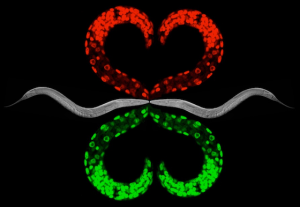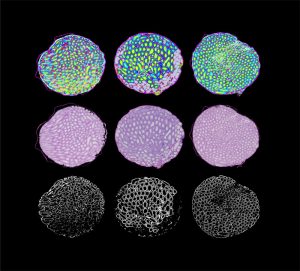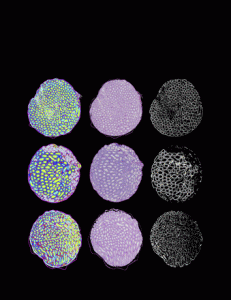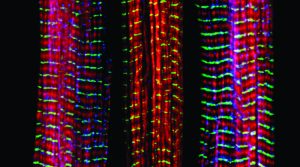Enter your address to receive notifications about new posts to your email.
Science & Publishing
-
Science & Publishing
#Worm17 love
Every two years, the GSA is proud to support the C. elegans research community as they come together to share their science and their infectious enthusiasm. Last week, the 21st International C. elegans Conference enjoyed beautiful Los Angeles weather and an abundance of cutting-edge biology. For those missing their worm friends already, and for those who couldn’t make it…
-
Science & Publishing
The mouse lemur: a new genetic model organism
Palm fronds crunch under a researcher’s foot as she hikes through a rainforest in Madagascar looking for a spot to release a tiny, omnivorous ball of fur with bulging eyes—a mouse lemur. This creature, the smallest type of primate, is an important research subject: it has just yielded a blood sample, skin cells, and an…
-
Science & Publishing
Housekeeping genes escape miRNA repression through alternative polyadenylation
Changing where the polyA tail is added to an mRNA transcript can fine-tune the tissue-specific expression of many genes, reports a Caenorhabditis elegans study published in the June issue of GENETICS. Blazie et al. show alternative polyadenylation (APA) allows transcripts to evade microRNA (miRNA) silencing in some tissues, allowing for tissue-specific expression of those genes.…
-
Science & Publishing
Fido won’t fetch? Maybe it’s his pedigree
Whether a thunderclap drives your dog to cower behind the couch or leaves it unfazed may be determined in part by genetics. In the June issue of GENETICS, Ilska et al. analyze genetic contributors to canine personality traits—such as fear of loud noises—using owners’ reports of their pets’ behavior. The researchers chose this survey-based method…
-
Science & Publishing
Behind the cover: Male infertility in the mouse Collaborative Cross
Fascinating discoveries sometimes emerge from the most daunting of experimental roadblocks. Designed to generate over 1,000 recombinant inbred mice lines for genetic mapping, the Collaborative Cross (CC) project unearthed astounding variation in male fertility when nearly 95% of the highly inbred CC lines went extinct. As part of the Multiparental Populations series in the June…
-
Science & Publishing
New in G3: multiparental populations, worm fat levels, and mutant screen reports
Check out the June issue of G3! Table of Contents Editorial Back to the Future: Multiparent Populations Provide the Key to Unlocking the Genetic Basis of Complex Traits Dirk-Jan de Koning, Lauren M. McIntyre G3: Genes, Genomes, Genetics June 2017 7: 1617-1618; DOI: https://doi.org/10.1534/g3.117.042846 Commentary Epistasis: Searching for Interacting Genetic Variants Using Crosses Ian M.…
-
Science & Publishing
June GENETICS Highlights
Check out the June issue of GENETICS by looking at the highlights or the full table of contents! ISSUE HIGHLIGHTS Alternative polyadenylation directs tissue-specific miRNA targeting in Caenorhabditis elegans somatic tissues, pp. 757-774 Stephen M. Blazie, Heather C. Geissel, Henry Wilky, Rajan Joshi, Jason Newbern, and Marco Mangone Alternative polyadenylation (APA) is observed in virtually all metazoans and…
-
Science & Publishing
Dysfunctional calcium release contributes to muscle weakness as we age
Strong muscles aren’t important only for athletes—declining skeletal muscle strength is strongly associated with lower quality of life and even mortality in older adults. As the world’s population ages, understanding why muscle strength decreases over our lifespans is critical to ensuring seniors enjoy a happy, healthy old age. Normally, a muscle contracts when calcium is…
-
Science & Publishing
MPP People: Elizabeth King
Multiparental populations (MPPs) have brought a new era in mapping complex traits, as well as new analytical challenges. To face these challenges and encourage innovation, the GSA journals launched the ongoing Multiparental Populations series in 2014. This month’s issues of GENETICS and G3 feature a bumper 16 MPP articles, timed to celebrate a new easy-to-use…
-
Science & Publishing
Explore the new Multiparental Populations resource at GENETICS and G3
The GSA Journals are proud to announce a brand new site for our Multiparental Populations (MPP) series. We’re celebrating this redesigned, easy-to-browse site with the addition of sixteen new papers from both journals to the series. As the field of genetics has grown, the rapid development of genomic technologies has given researchers the ability to…
-
Science & Publishing
MPP People: Andrew Morgan
Multiparental populations (MPPs) have brought a new era in mapping complex traits, as well as new analytical challenges. To face these challenges and encourage innovation, the GSA journals launched the ongoing Multiparental Populations series in 2014. This month’s issues of GENETICS and G3 feature a bumper 16 MPP articles, timed to celebrate a new easy-to-use…












